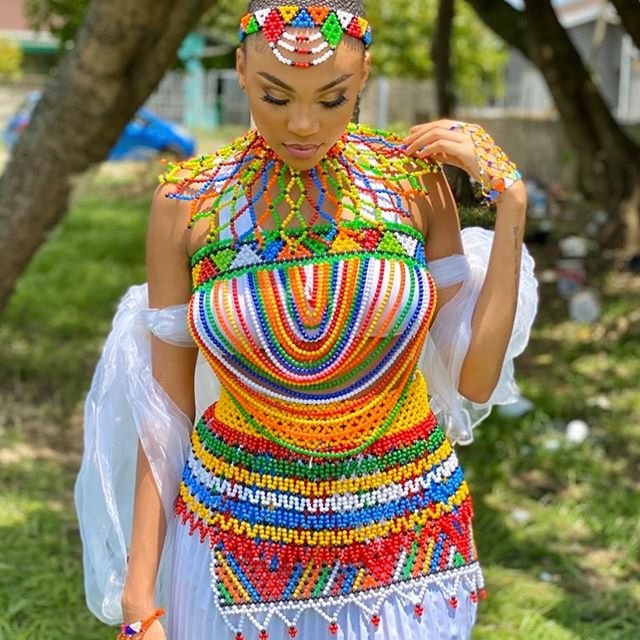The Zulu people are an ethnic group whose members live mainly in the South African province of KwaZulu-Natal, where their culture, language, and tradition are preserved. Zulu beadwork is not only beautiful, but is also rich in tradition and cultural meaning. What makes this intricate craft and art unique is the use of decorative geometrical designs, particularly the triangle, and colors to convey a message. Each of the seven colors can be used to convey a negative or a positive meaning. For example, yellow means wealth in a positive context, but badness in a negative one. Red means physical love and strong emotion, but negatively it depicts anger and heartache. The craft itself forms a language devoted entirely to the expression of ideas and feelings related to relations between the sexes.
Beadwork is practiced by Zulu women and is passed down through generations by the older women in the family. They become communities of their own and are empowered by their skill and contributions to their communities.
The Zulu peoples, among many other southern African cultural groups, have maintained a rich tradition of beadwork. The earliest commentaries describe pieces of bone, small horns, shells, and small pieces of polished wood and stone that were pierced to make "beads" and strung together as necklaces and belts.
